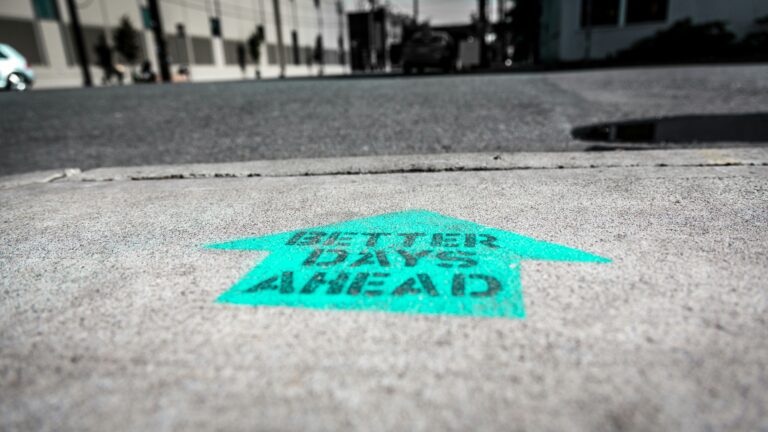Running a side hustle often means juggling multiple roles, long hours, and high expectations – all of which can fuel stress, burnout, fear of failure, imposter syndrome, and low motivation. Cognitive Behavioral Therapy (CBT), as taught by Dr. David Burns, emphasizes that our thoughts directly shape our feelings. In Burns’s Feeling Good Handbook, he explains that “thoughts, feelings, and behaviors are interconnected” and that deliberately changing negative thought patterns can change how we feelastermentalhealth.com. In other words, by identifying and reframing unhelpful thoughts, side hustlers can lessen anxiety and despair and become more emotionally resilient and productivepositivepsychology.comastermentalhealth.com.
Common Cognitive Distortions
Burns describes cognitive distortions as biased or irrational thought patterns that warp reality and trigger negative emotionspositivepsychology.compositivepsychology.com. For side hustlers, typical distortions include:
- All-or-Nothing (Black-and-White) Thinking: Viewing situations in extremes. (“If my project isn’t perfect, it’s a total failure.”) Burns notes that this distortion ignores any middle groundpacwrc.pitt.edu.
- Overgeneralization: Drawing broad conclusions from a single event. (“I made one mistake — I never succeed at anything.”) This often uses words like “always” or “never”pacwrc.pitt.edu.
- Mental Filter / Discounting Positives: Focusing only on negative details and ignoring positives. Even if a task goes well, one bad comment can lead us to “obsess” over it and dismiss all the good feedbackpacwrc.pitt.edupacwrc.pitt.edu.
- Jumping to Conclusions (Mind-Reading and Fortune-Telling): Assuming the worst without evidence. For example, believing others think you’re incompetent (“my boss surely thinks I’m a failure”) or predicting failure (“I’m definitely going to blow this presentation”) despite no proofpacwrc.pitt.edu.
- Magnification (Catastrophizing) and Minimization: Exaggerating problems (“This small error is going to ruin everything!”) or minimizing accomplishments (“Anyone could have done this job”). This “binocular trick” skews realitypacwrc.pitt.edu.
- Emotional Reasoning: Letting feelings dictate facts. (“I feel worthless, so I must be worthless.”) Burns explains that feeling upset or scared doesn’t prove the situation is objectively badpacwrc.pitt.edu.
- “Should” Statements: Being rigid about how things must be. (“I should never feel anxious, I must succeed.”) Burns calls this the “shouldy” approach, noting it leads to guilt, frustration, and rebellionpacwrc.pitt.edu.
- Labeling: Attaching absolute labels to yourself or others. (“I’m a loser,” or “They’re incompetent.”) This is an extreme form of all-or-nothing thinking that equates a single trait with one’s entire identitypacwrc.pitt.edu.
- Personalization and Blame: Taking responsibility for events beyond your control or blaming others entirely. (“This project failed because I’m a terrible worker.”) Burns points out that personalization causes unnecessary guilt and shamepacwrc.pitt.edu. (Conversely, unfairly blaming others creates anger and helplessness.)
Identifying which distortions you commonly use is the first step. For example, many side hustlers pressure themselves with perfectionist “shoulds” or catastrophize small setbacks, worsening burnoutpacwrc.pitt.edu. Entrepreneurs prone to imposter feelings often label themselves “frauds” and discount their successesncbi.nlm.nih.govpacwrc.pitt.edu. Recognizing these thought patterns makes them easier to challenge.
Tools: Recording and Restructuring Thoughts
CBT offers concrete tools to break these thinking traps. A key technique from Burns is the thought record (Daily Mood Log). This structured exercise guides you step-by-step to dissect upsetting situations and reframe your thinking. In Burns’s version, you start by describing the Upsetting Event and rating your emotions. You then list the Automatic Negative Thoughts that arose, identify the Distortions involved, and finally write Balanced Alternative Thoughts (see example formatfindingyourwayps.com). For instance, if you thought “I must finish this side project perfectly or I’m a failure,” you’d note the distortion (should/must thinking) and generate a more balanced response (“It’s okay if it’s not perfect; I can learn from any mistakes”).
Burns emphasizes that using a thought record builds metacognition – the ability to see your thoughts as objects you can examine and changecogbtherapy.com. The act of writing “I feel X because I thought Y” helps distance you from reflexive thinking. As one CBT guide explains, “automatic thoughts have the potential to trigger intense negative emotions… [but] in most instances, it is the automatic thoughts that play the largest role in determining how we feel, not the situation itself”cogbtherapy.com. By recording and challenging these thoughts, you gradually weaken their impact.
Steps to Use a Thought Record:
- 1. Describe the situation. Write a brief context for what happened. (Example: “After work I tried to update my side-business website but it took longer than planned.”)
- 2. Rate your emotions. Identify feelings (e.g. frustration, anxiety) and give each a 0–100% intensity.
- 3. Write your automatic thoughts. Note each negative thought or belief you had about the situation. (For example, “I’m an idiot for not being faster.”)
- 4. Identify distortions. Next to each thought, label any cognitive distortion(s) at play (use Burns’s checklist of distortionsfindingyourwayps.com).
- 5. Challenge and reframe. For each thought, write a more balanced alternative. Use evidence and logic to dispute the distortion. (Instead of “I’m an idiot,” reframe: “I’m learning; it’s normal to take time to get better.”)
- 6. Rerate and reflect. Rerate your belief in the original thought on a 0–100% scale and note how your emotions change. Often the intensity drops significantly after reframing.
This process – noting the thought, spotting the distortion, and rewriting the story – trains you to catch negativity in the moment. With practice, you’ll find you can run through these steps in your head quickly, as Burns describes: “All skills in this book rely on metacognition as the foundation… It is hard to overstate how powerful a tool this can be in changing our feelings and behavior”cogbtherapy.com.
Reframing Thoughts for Resilience and Productivity
Consistently applying CBT reframing can build resilience and boost productivity. Research shows that resilient individuals handle stress more effectively; resilience “acts as a buffer against anxiety and depression,” and helps people “achieve more because it makes us better problem solvers when things go awry”atlassian.com. In practical terms, a side hustler who reframes “I’ll never make this deadline” to “I can tackle one task at a time” stays motivated and solution-focused.
On the flip side, letting distortions fester can sap energy and motivation. As one review notes, negative thinking “lead[s] to negative moods and emotions… and can decrease motivation and productivity”positivepsychology.com. By contrast, identifying and correcting these thinking errors has the opposite effect. Cognitive restructuring “helps challenge & change cognitive distortions… improving mental wellbeing by fostering balanced, realistic thoughts”positivepsychology.com. Over time, practicing this kind of reframing literally rewires your response patterns: “practicing new thinking patterns through CBT enhances emotional resilience”positivepsychology.com.
Simple practices reinforce these gains. For example, keeping a journal (which can function like an informal thought record) is linked to greater emotional stamina. Reflective journaling “has been shown to improve emotional stamina and resilience” among high-stress professionals (nurses, in one study)atlassian.com. The act of writing about challenges not only offloads stress but also helps you see progress and patterns. Many side hustlers find that a few minutes of journaling or listing daily achievements helps them remember their wins and reframe worries in perspective.
Overcoming Side Hustler Mindset Challenges
CBT reframing can directly target specific side-hustler mindsets:
- Burnout and Overwhelm: When exhaustion sets in, you might think “I can’t do this anymore.” Instead, challenge that with realistic self-talk: “I’m dealing with a lot. I deserve a break and can resume with fresh energy.” Remind yourself that recovery (sleep, small breaks) is productive, not lazy.
- Fear of Failure: Perfectionism (“I must never fail”) often locks people down. Burns identifies this kind of mustard (musterbation) thinking as a self-defeating beliefpacwrc.pitt.edu. To counter it, reframe failure as feedback: “If I didn’t succeed this time, I’ll learn and improve.” Write out feared scenarios and dispute them with evidence of past successes.
- Imposter Syndrome: If you dismiss achievements or fear being “found out,” recognize that you may be discounting your competence. Research notes that impostor feelings involve discounting one’s abilities and attributing success to luckncbi.nlm.nih.gov. Combat this distortion by logging actual accomplishments and acknowledging your role. A CBT approach is to ask, “What would I say to a friend in my shoes?” Usually, you’d accept their talents; give yourself the same break.
- Low Motivation and Procrastination: Defeatist thoughts like “Why bother? I’ll just mess it up” can be reframed to focus on achievable steps. Break tasks into tiny goals and replace “I’ll fail” with “I’ll try the first step and see how it goes.” Even a 5-minute action breaks the inertia and often shifts the mood.
In every case, the key is to catch the thought early and challenge it. Ask yourself: Is this thought 100% true? Am I ignoring positive evidence? What would I tell someone else who thought this? These simple CBT questions can diffuse imposter fears, reduce procrastination, and ease burnout. Over time, turning those knee-jerk negative thoughts into balanced ones builds emotional resilience, so you recover from setbacks without sinking into despairpositivepsychology.comatlassian.com.
Conclusion
For busy side hustlers, managing stress and staying motivated can hinge on the inner dialogue. Dr. Burns’s CBT techniques – from recognizing distortions to completing thought records – offer practical ways to reshape that dialogue. The evidence is clear: with effort and practice, even deep-seated thought patterns can be reframed and changedpositivepsychology.compositivepsychology.com. By systematically disputing irrational beliefs and cultivating realistic self-talk, side hustlers can turn anxiety into action and self-doubt into productivity. In short, changing your thoughts gives you the power to change your mood, strengthen your resilience, and ultimately get more donepositivepsychology.comatlassian.com.
Sources: Principles and examples drawn from CBT research and David Burns’s The Feeling Good Handbookastermentalhealth.compacwrc.pitt.edupacwrc.pitt.educogbtherapy.compositivepsychology.compositivepsychology.com, along with recent studies on cognitive restructuring and resilienceatlassian.comncbi.nlm.nih.gov.
Citations
What is Cognitive Behavioral Therapy? – Aster Mental Health
https://www.astermentalhealth.com/what-is-cognitive-behavioral-therapy/Cognitive Distortions: 15 Examples & Worksheets (PDF)https://positivepsychology.com/cognitive-distortions/Cognitive Distortions: 15 Examples & Worksheets (PDF)https://positivepsychology.com/cognitive-distortions/Cognitive Restructuring Techniques for Reframing Thoughtshttps://positivepsychology.com/cbt-cognitive-restructuring-cognitive-distortions/PATTERNS OF COGNITIVE DISTORTIONS, from David Burnshttps://www.pacwrc.pitt.edu/curriculum/313_MngngImpctTrmtcStrssChldWlfrPrfssnl/hndts/HO15_ThnkngAbtThnkng.pdfPATTERNS OF COGNITIVE DISTORTIONS, from David Burnshttps://www.pacwrc.pitt.edu/curriculum/313_MngngImpctTrmtcStrssChldWlfrPrfssnl/hndts/HO15_ThnkngAbtThnkng.pdfPATTERNS OF COGNITIVE DISTORTIONS, from David Burnshttps://www.pacwrc.pitt.edu/curriculum/313_MngngImpctTrmtcStrssChldWlfrPrfssnl/hndts/HO15_ThnkngAbtThnkng.pdfPATTERNS OF COGNITIVE DISTORTIONS, from David Burnshttps://www.pacwrc.pitt.edu/curriculum/313_MngngImpctTrmtcStrssChldWlfrPrfssnl/hndts/HO15_ThnkngAbtThnkng.pdfPATTERNS OF COGNITIVE DISTORTIONS, from David Burnshttps://www.pacwrc.pitt.edu/curriculum/313_MngngImpctTrmtcStrssChldWlfrPrfssnl/hndts/HO15_ThnkngAbtThnkng.pdfPATTERNS OF COGNITIVE DISTORTIONS, from David Burnshttps://www.pacwrc.pitt.edu/curriculum/313_MngngImpctTrmtcStrssChldWlfrPrfssnl/hndts/HO15_ThnkngAbtThnkng.pdfPATTERNS OF COGNITIVE DISTORTIONS, from David Burnshttps://www.pacwrc.pitt.edu/curriculum/313_MngngImpctTrmtcStrssChldWlfrPrfssnl/hndts/HO15_ThnkngAbtThnkng.pdfPATTERNS OF COGNITIVE DISTORTIONS, from David Burnshttps://www.pacwrc.pitt.edu/curriculum/313_MngngImpctTrmtcStrssChldWlfrPrfssnl/hndts/HO15_ThnkngAbtThnkng.pdfPATTERNS OF COGNITIVE DISTORTIONS, from David Burnshttps://www.pacwrc.pitt.edu/curriculum/313_MngngImpctTrmtcStrssChldWlfrPrfssnl/hndts/HO15_ThnkngAbtThnkng.pdfPATTERNS OF COGNITIVE DISTORTIONS, from David Burnshttps://www.pacwrc.pitt.edu/curriculum/313_MngngImpctTrmtcStrssChldWlfrPrfssnl/hndts/HO15_ThnkngAbtThnkng.pdfImposter Phenomenon – StatPearls – NCBI Bookshelfhttps://www.ncbi.nlm.nih.gov/books/NBK585058/Microsoft Word – Daily Mood Log.dochttps://findingyourwayps.com/wp-content/uploads/2013/08/Daily-Mood-Log.pdfIdentifying Automatic Thoughts in CBThttps://cogbtherapy.com/cbt-and-automatic-thoughtsIdentifying Automatic Thoughts in CBThttps://cogbtherapy.com/cbt-and-automatic-thoughtsResearch-backed practices that strengthen your emotional resilience – Work Life by Atlassianhttps://www.atlassian.com/blog/productivity/how-to-build-emotional-resilienceResearch-backed practices that strengthen your emotional resilience – Work Life by Atlassianhttps://www.atlassian.com/blog/productivity/how-to-build-emotional-resilienceCognitive Distortions: 15 Examples & Worksheets (PDF)https://positivepsychology.com/cognitive-distortions/
All Sources
astermentalhealthpositivepsychologypacwrc.pittncbi.nlm.nihfindingyourwaypscogbtherapyatlassian













